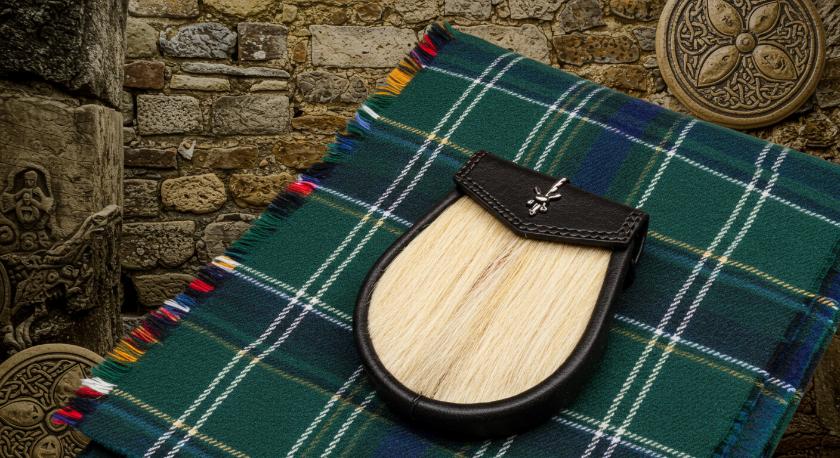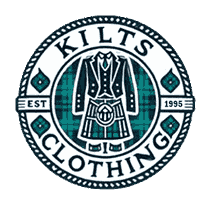The Rich History of Irish Kilts: From Celtic Origins to Modern-Day Fashion

When we think of kilts, many people immediately associate them with Scotland. Still, the history of kilts in Ireland is just as rich and culturally significant. The Irish kilt is more than just a piece of clothing—it's a symbol of Irish heritage, pride, and tradition. From its early roots in Celtic culture to its place in modern fashion, the Irish kilt has been a staple of Irish identity for centuries. In this blog, we'll explore the fascinating evolution of the Irish kilt, tracing its journey from ancient Celtic times to its contemporary renaissance.
A Timeless Symbol of Irish Heritage
Kilts have long been associated with the cultural and historical identity of Ireland, though their exact origins are somewhat elusive. Early depictions show that Celtic peoples, including the Irish, wore woolen garments that could be draped or fastened in various ways. Over time, these garments evolved into what we recognize today as the kilt. A versatile and functional piece of clothing, the kilt was more than just practical—it was an essential part of the Gaelic lifestyle and a statement of identity.
Today, the kilt is worn proudly at festivals, weddings, and formal gatherings, serving as a reminder of Irish pride and the enduring connection to the country's storied past. While the traditional kilt may have evolved in terms of style and function, its connection to Irish history remains as strong as ever.
The Celtic Roots: Early Beginnings of the Kilt
The story of the Irish kilt begins with the ancient Celtic tribes that populated Ireland and much of Europe. The Celts were known for their distinct style of dress, which often included a variety of woven woolen garments that provided warmth and protection in the harsh Celtic winters. These garments, with pins or brooches, were the precursors to the modern kilt.
In ancient times, the garment worn by Celtic men was essentially a large piece of woolen cloth that could be wrapped around the body and secured with a belt. This clothing style was both functional and adaptable, suitable for battle, travel, and daily life. The earliest form of the Irish kilt was essentially a tunic-like garment that draped from the shoulders to the knees, made from undyed wool and later dyed in colors that symbolized the individual's clan or tribe.
The Role of the Kilt in Irish Society
As the centuries passed, the Irish kilt became closely tied to Gaelic society. The Celts used their distinctive styles of dress, including the kilt, to differentiate between clans and families. The tartan patterns that later became famous in Scotland were not as prominent in Ireland, but specific regional designs did emerge. The kilt was not just a garment; it represented a connection to one's heritage and community.
In Gaelic Ireland, the kilt became a symbol of unity among members of a clan. Each clan had its version of the kilt, often designed with specific colors and patterns to represent the family's identity. These men's Irish kilt was worn proudly during festivals, ceremonies, and battles, reinforcing the strong sense of community and loyalty that defined the Gaelic way of life.
The Influence of Scottish Kilts on Irish Fashion
While the Irish kilt has deep roots in Celtic culture, the influence of Scottish kilts on Irish fashion cannot be ignored. The Scottish kilt, as it is known today, evolved independently, becoming a more structured garment with iconic pleats and tartan patterns. However, it was only a matter of time before this Scottish version of the kilt began to influence Irish fashion.
During the 18th and 19th centuries, as Irish and Scottish cultures mingled and shared traditions, the iconic tartan patterns of Scottish kilts began to appear more frequently in Ireland. In addition, Scottish kilts became popular among the Irish nobility, and the garment's role in both countries started to overlap. Despite these influences, the Irish kilt retained its unique identity, continuing to symbolize the pride and resilience of Irish culture.
The Decline and Revival: Kilts in Irish History
Like many traditional garments, the Irish kilt went through periods of decline. The arrival of British rule in Ireland and the influence of English fashion led to the gradual disappearance of many Gaelic traditions, including the wearing of kilts. By the 18th century, the British had outlawed traditional Irish dress in an effort to suppress Irish culture. This suppression led to a sharp decline in the wearing of kilts, which was a symbol of rebellion and national identity.
However, the kilt never disappeared entirely. During the 19th century, the Irish Cultural Revival—a movement aimed at preserving and celebrating Irish traditions—helped to bring back interest in traditional Irish dress, including the kilt. A growing sense of national pride fueled the revival as the Irish sought to reclaim their cultural heritage from centuries of colonial influence.
The Kilt in Modern-Day Fashion
Today, the Irish kilt enjoys a resurgence, not just as a traditional garment but as a fashionable item. While kilts are still worn during cultural celebrations like St. Patrick's Day and at weddings, they've also found a place in modern fashion. Designers have adapted the kilt into contemporary styles, making it a versatile and stylish option for a variety of occasions.
Contemporary Irish kilts come in a range of fabrics, from traditional wool to modern synthetics, and are often available in colors and patterns that reflect personal style rather than clan heritage. Many modern kilts also incorporate pleating and other design elements borrowed from the Scottish tradition, blending the old and the new.
Today's Irish kilt has become a symbol of pride and celebration, worn by people of Irish descent and fashion enthusiasts alike. Whether it's a traditional wool kilt for formal occasions or a more casual, contemporary version for everyday wear, the Irish kilt is a testament to Ireland's vibrant cultural heritage.
How to Wear an Irish Kilt Today
Wearing an Irish kilt today is about more than just embracing tradition—it's about making a personal statement. Whether you're attending a wedding or a cultural event or want to add a touch of Irish flair to your wardrobe, the kilt can be a stylish and versatile choice.
For formal occasions, pair your kilt with a crisp shirt, a waistcoat, and traditional accessories like a sporran and belt. For a more casual look, you can wear your kilt with a simple shirt or sweater, letting the kilt be the focal point of your outfit. Adding accessories such as a brooch or tie can also help to elevate the look.
The Symbolism of Irish Kilts: More Than Just a Garment
The Irish kilt is not only a practical garment but also carries significant cultural meaning. It symbolizes a deep connection to Ireland's history, clans, and national identity. For generations, the kilt has served as a proud reminder of Irish resilience, independence, and heritage.
The kilt is also a symbol of unity among the Irish people, connecting individuals to their ancestors and each other. Whether worn during celebrations or as part of daily life, the Irish kilt serves as a tangible link to the past and a statement of national pride.
Conclusion:
The Irish kilt has come a long way from its humble beginnings in Celtic culture. Over the centuries, it has evolved and adapted to changing social, political, and cultural landscapes, but its significance has remained constant. Today, the kilt stands as a proud symbol of Irish heritage, worn by those who celebrate their ancestry and the rich history that defines the Irish people.
From its ancient roots to its modern-day resurgence, the Irish kilt continues to inspire admiration and respect. It remains a timeless symbol of Irish pride. This garment tells the story of a nation's strength, resilience, and cultural legacy.


